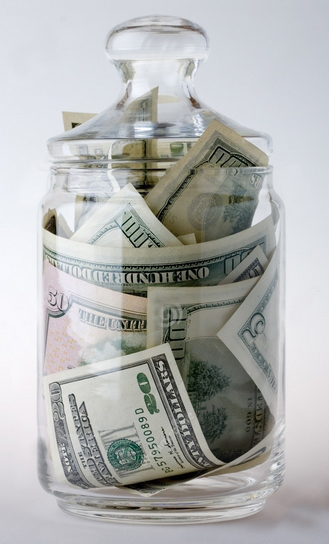Cookie Jar Reserves
Jan 29, 2015
In my last post I talked about a manufacturing company that had been using the direct costing method for valuing their inventory for many years and my conversation with the CFO concerning the effects on overall profitability by converting to the full absorption method of accounting.
The CFO prepared a simplified model of what would happen to profitability compared to full absorption costing in several dramatic scenarios. In one case, he presumed there were no sales whatsoever, just a buildup of inventory. In the other case, he presumed there was no increase in inventory, only sales. He compared the results of the direct costing method to those under a full absorption costing method. As you can assume, the results were dramatically different, resulting in less profit when implementing the direct costing method.
It then occurred why the management team was so interested in maintaining the direct costing method when it clearly is disallowed for both GAAP and federal income tax purposes.
 My first thought was it may be a method of managing taxable income. However, I quickly realized that if the returns are being prepared by an outside accounting firm, they are very likely making modifications on the tax return to portion an appropriate amount of overhead both under Code sections 471 and 263A. So that is not likely to be the motivation.
My first thought was it may be a method of managing taxable income. However, I quickly realized that if the returns are being prepared by an outside accounting firm, they are very likely making modifications on the tax return to portion an appropriate amount of overhead both under Code sections 471 and 263A. So that is not likely to be the motivation.
Then the thought occurred to me that perhaps the management team is using this inventory valuation method as some type of a cookie jar. Meaning they are trying to build up a reserve in anticipation of something happening in the future to unexpectedly decrease profits. Something, such as, an adjustment required by the outside accounting firm to more correctly state accrued expense by dramatically increasing that accrual.
Years ago I was with a group of CFOs who were discussing that very circumstance and all had developed some sort of profit reserve accrual someplace on the balance sheet which had the sole purpose of being used if the outside accountants required some kind of an unexpected adjustment to reduce profits. Rather than let pre-tax book income be adjusted downward, the CFO would simply go to his cookie jar, reverse some of his excess accruals and bring profits right back to where they were pre-outside accountant required accruals. The goal of all of this, of course, is to eliminate any negative effects felt by stakeholders caused by a downward profit adjustment. For example, reductions in bonuses, problems with outside bankers or shareholders, or perhaps suppliers, who have been relying on a certain level of profitability as developed throughout the years.
At the time, I believed experienced CFOs who had lived through an event that unexpectedly reduced profits, soon learned to build up their own reserves as protection against some such future unexpected event.
However, the ability to use such reserves is dependent upon the nature of the accrual. Changes in accounting principles or corrections of an error are required to be spread over the number of years presented with the year-end financial statements and all are not permitted to be run through the most current year. However, change in accounting estimates can all generally be taken through one year. This is in accordance with GAAP rules today.
Direct costing of inventory is an accounting principle. Since the adjustment would have to be spread out over a number of years, attempting to use it as a cookie jar could result in unexpected effects on profitability. In general, the adjustment for the current year would not directly offset an accrual required by the outside accountants. However, changes in an accounting estimate, such as an accrual for warranty reserves or perhaps an accrual for bad debts, is permitted all in one year. This would be an appropriate area for a CFO looking to build a cookie jar. Cookie jars are a form of “creative accounting” and although I am sure not everyone uses them, I want to point out as a prudent CPA, I do not advocate their utilization.
The point is that a change in your inventory method or the use of an inventory method to create a cookie jar would be ineffective and, depending on the scenario, perhaps damaging as a reserve for a future negative profit adjustment.
Categories: Cost Accounting
